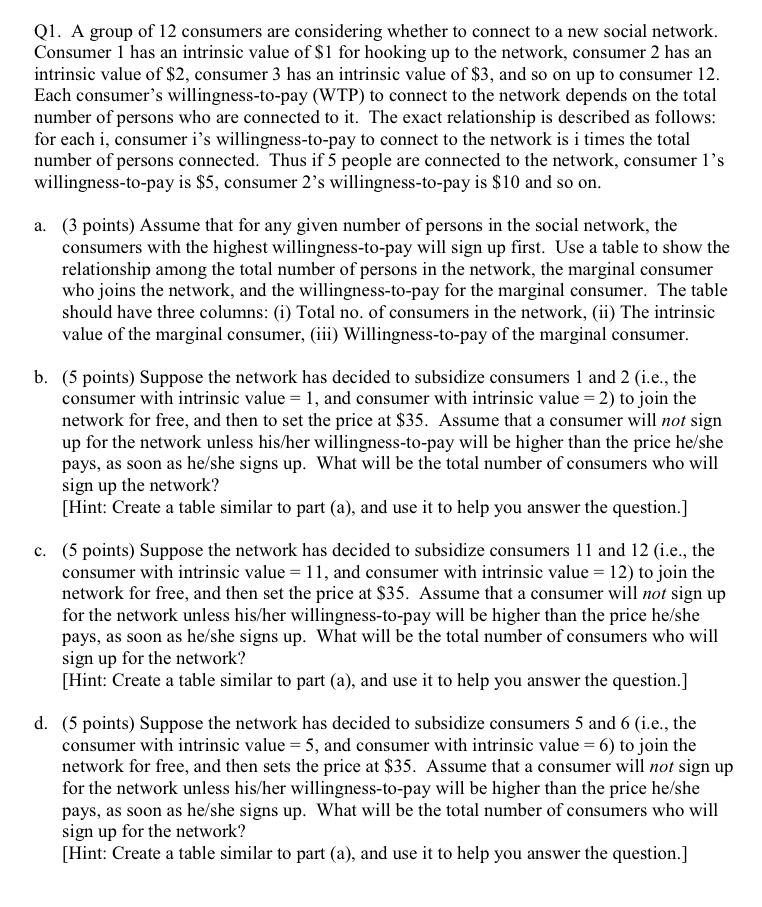Q1. A group of 12 consumers are considering whether to connect to a new social network. Consumer 1 has an intrinsic value of $1 for hooking up to the network, consumer 2 has an intrinsic value of $2, consumer 3 has an intrinsic value of $3, and so on up to consumer 12. Each constuner's willingness-to-pay (WTP) to connect to the network depends on the total number of persons who are connected to it. The exact relationship is described as follows: for each i, constuner i's willingness-to-pay to connect to the network is i times the total number of persons connected. Thus if 5 people are connected to the network, consumer 1's willingness-to-pay is $5, consumer 2's willingness-to-pay is $113 and so on. El. (3 points) Assume that for any given number of persons in the social network, the consumers with the highest willingness-to-pay will sign up rst. Use a table to show the relationship among the total number of persons in the network, the marginal consumer who joins the network, and the willingness-to-pay for the marginal consumer. The table should have three columns: (i) Total no. of consumers in the network, (ii) The intrinsic value of the marginal consumer, (iii) Willingness-to-pay of the marginal consumer. (5 points) Suppose the network has decided to subsidize consumers 1 and 2 (i.e., the consumer with intrinsic value = 1, and consumer with intrinsic value = 2) to join the network for free, and then to set the price at $35. Assume that a consumer will not sign up for the network unless hisx'her willingness-to-pay will be higher than the price hefshe pays, as soon as hefshe signs up. What will be the total number of consumers who will sign up the network? [Hint: Create a table similar to part (a), and use it to help you answer the question] (5 points) Suppose the network has decided to subsidize consumers 11 and 12 {i.e., the consumer with intrinsic value = 11, and consumer with intrinsic value = 12) to join the network for free, and then set the price at $35. Assume that a constuner will not sign up for the network unless hisfher willingness-to-pay will be higher than the price hefshe pays, as soon as hefshe signs up. What will be the total number of consumers who will sign up for the network? [Hint Create a table similar to part (a), and use it to help you answer the question] (5 points) Suppose the network has decided to subsidize consumers 5 and 6 {i.e., the consumer with intrinsic value = 5, and consumer with intrinsic value = 6) to join the network for free, and then sets the price at $35. Assume that a consumer will not sign up for the network unless hise'her willingness-to-pay will be higher than the price hefshe pays, as soon as hefshe signs up. What will be the total ntunber of consumers who will sign up for the network? [Hintz Create a table similar to part (a), and use it to help you answer the question]







